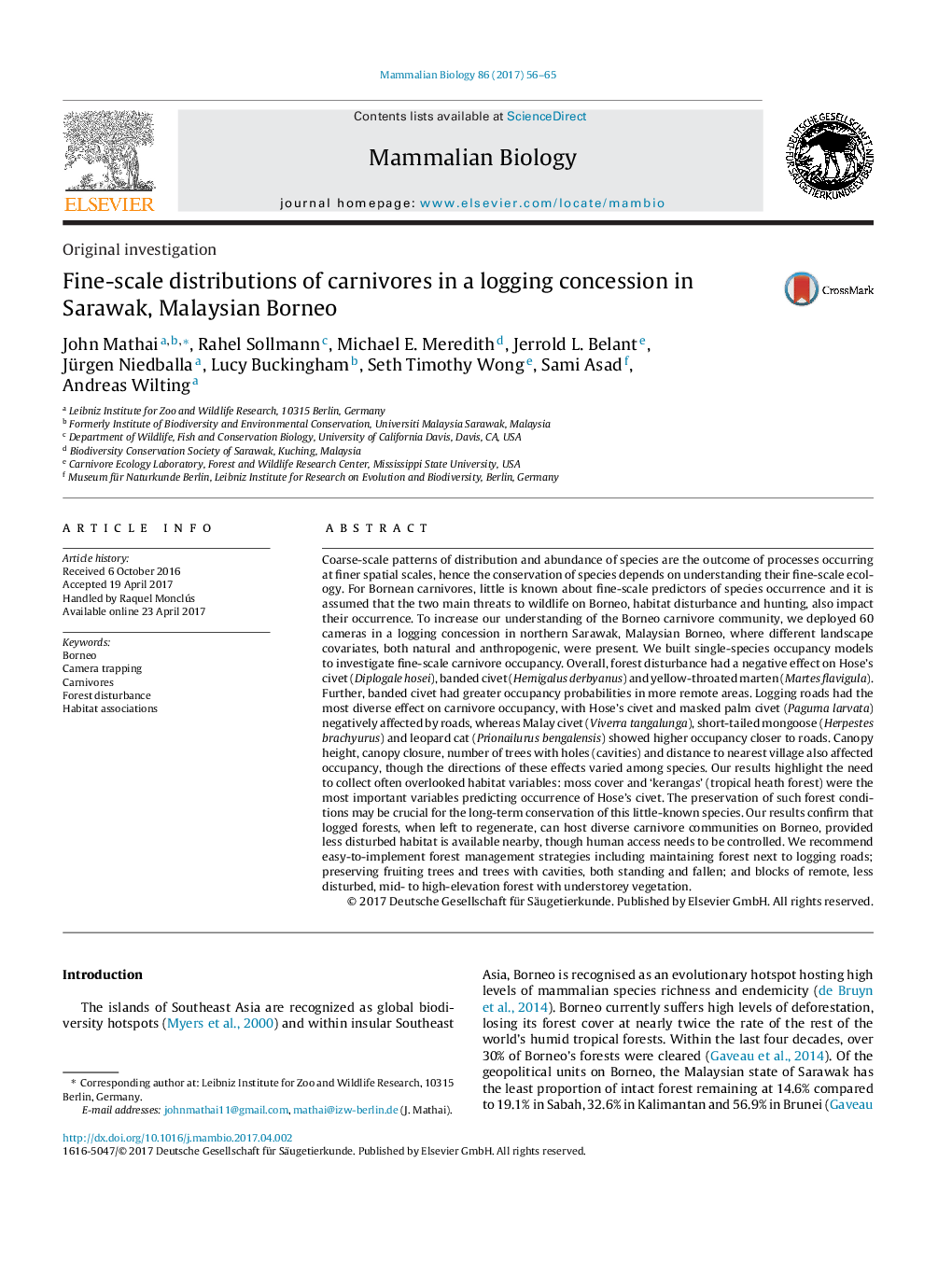| کد مقاله | کد نشریه | سال انتشار | مقاله انگلیسی | نسخه تمام متن |
|---|---|---|---|---|
| 5533757 | 1550461 | 2017 | 10 صفحه PDF | دانلود رایگان |

Coarse-scale patterns of distribution and abundance of species are the outcome of processes occurring at finer spatial scales, hence the conservation of species depends on understanding their fine-scale ecology. For Bornean carnivores, little is known about fine-scale predictors of species occurrence and it is assumed that the two main threats to wildlife on Borneo, habitat disturbance and hunting, also impact their occurrence. To increase our understanding of the Borneo carnivore community, we deployed 60 cameras in a logging concession in northern Sarawak, Malaysian Borneo, where different landscape covariates, both natural and anthropogenic, were present. We built single-species occupancy models to investigate fine-scale carnivore occupancy. Overall, forest disturbance had a negative effect on Hose's civet (Diplogale hosei), banded civet (Hemigalus derbyanus) and yellow-throated marten (Martes flavigula). Further, banded civet had greater occupancy probabilities in more remote areas. Logging roads had the most diverse effect on carnivore occupancy, with Hose's civet and masked palm civet (Paguma larvata) negatively affected by roads, whereas Malay civet (Viverra tangalunga), short-tailed mongoose (Herpestes brachyurus) and leopard cat (Prionailurus bengalensis) showed higher occupancy closer to roads. Canopy height, canopy closure, number of trees with holes (cavities) and distance to nearest village also affected occupancy, though the directions of these effects varied among species. Our results highlight the need to collect often overlooked habitat variables: moss cover and 'kerangas' (tropical heath forest) were the most important variables predicting occurrence of Hose's civet. The preservation of such forest conditions may be crucial for the long-term conservation of this little-known species. Our results confirm that logged forests, when left to regenerate, can host diverse carnivore communities on Borneo, provided less disturbed habitat is available nearby, though human access needs to be controlled. We recommend easy-to-implement forest management strategies including maintaining forest next to logging roads; preserving fruiting trees and trees with cavities, both standing and fallen; and blocks of remote, less disturbed, mid- to high-elevation forest with understorey vegetation.
Journal: Mammalian Biology - Zeitschrift für Säugetierkunde - Volume 86, September 2017, Pages 56-65